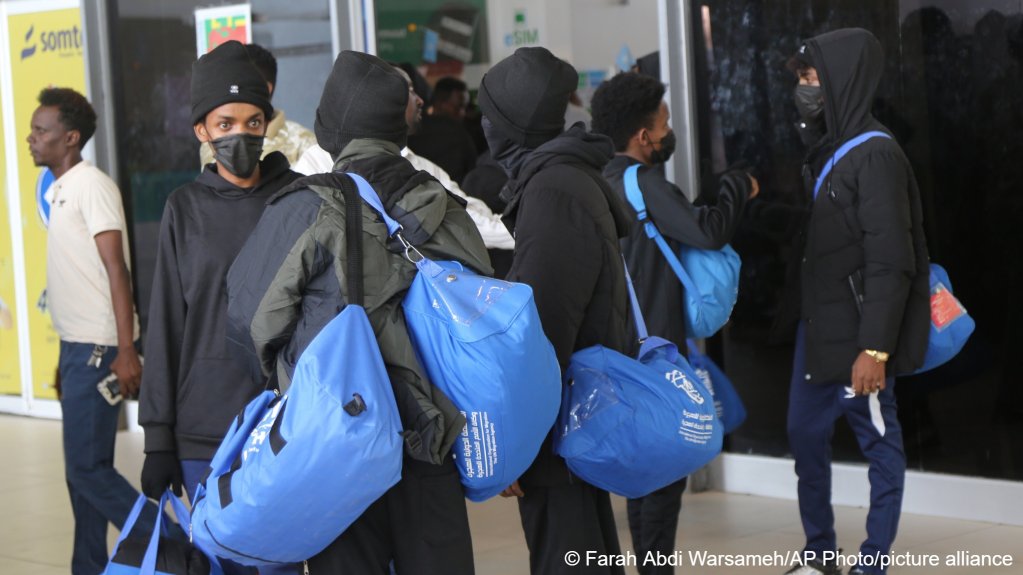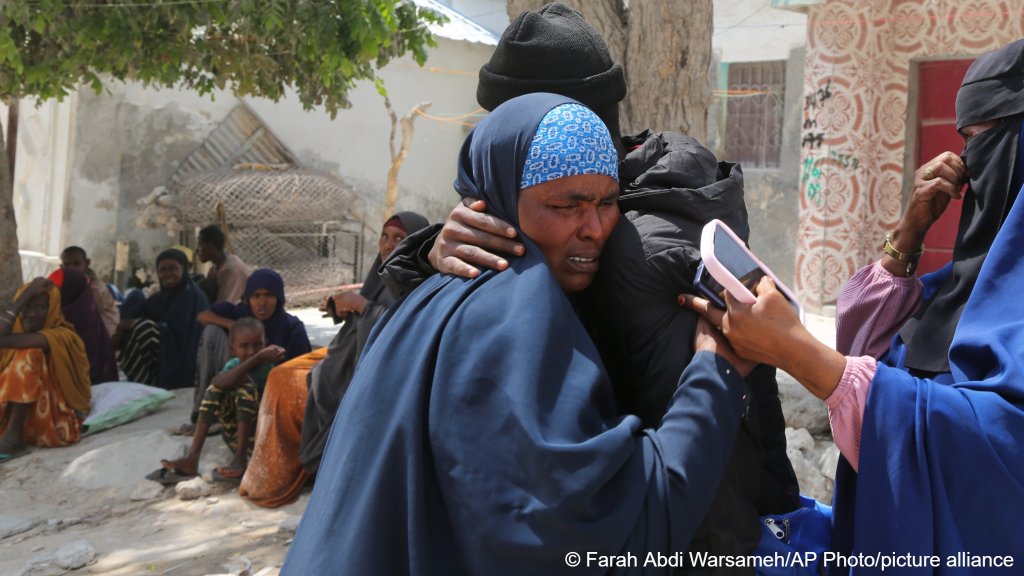A group of 165 Somali migrants, who had been stuck in Libya, have safely returned home with the help of the IOM and the EU. This brings the total number of migrants returned from Libya to Somalia with help from the IOM this year to over 550.
The plane carrying 165 migrants landed first at Egal International Airport in Hargeisa to disembark 13 members of the group before proceeding to Aden Abdulle International Airport in the capital Mogadishu to disembark the remaining 152 passengers.
Most of the individuals on board the chartered flight were young men below the age of 25 — including 27 minors, who had been stranded in Libya for several months.
The UN Migration Agency (IOM) highlighted testimonies from members of the group saying they had suffered exploitation and abuse by smugglers and human traffickers in Libya.
All of the returnees had received support from the IOM's Voluntary Humanitarian Return (VHR) program, which is funded by the EU.
Read AlsoMitigating risks? Migrants in Libya reflect on safety before trying to cross Mediterranean
IOM: Dignity key to this reintegration at home
Upon arrival in Mogadishu and Hargeisa, respectively, the returnees received "temporary accommodation, onward transportation, medical and psychosocial support, pocket money, phones and SIM cards to reconnect with their families," IOM said in a statement.

"Every return is voluntary, informed, and based on the migrant's [own] decision," it added.
Prior to such voluntary returns, IOM officials on the ground in Libya provide counselling to ensure the prospective returnees can make free and informed decisions about returning home.
As much as possible, the voluntary return programs offer tailored longterm reintegration assistance to ensure the returnees remain in their home country — in this case, Somalia — rather than becoming tempted to embark on dangerous migration paths once more.
IOM stresses that providing assistance "to rebuild their lives and livelihoods with dignity" is key to this reintegration process.
To this end, IOM also support projects on the ground in places like Somalia, which primarily serve the purpose of preventing migration in the first place, such as creating access to clean water and providing opportunities for subsistence farming.
Hundreds of Somalians return home with IOM help
According to IOM's Displacement Tracking Matrix, more than 1,400 Somali migrants remained stranded in Libya as of April 2025 — however, the real number of Somalians stuck in the North African nation is likely to be much higher.
Thousands of migrants urgently require protection and humanitarian assistance in Libya.

Since August 2022, nearly 1,400 Somali migrants (including 215 women) have been supported with voluntary return to their home country, the majority of whom (over 900) have also made use of reintegration assistance on the ground in Somalia upon their return as part of this program.
Read AlsoDozens of migrants feared dead off Libyan coast
Libya: where the journey ends for many migrants
Many migrants from the African continent but also from the Middle East as well as Central and Southeast Asia, continue to make their way to Libya — in the hope of embarking on boats to cross the Mediterranean to Europe.
Read AlsoThe Libyan Coast Guard – explained
However, this irregular migration route remains one of the most dangerous in the world from beginning to end; before ever setting sight on a migrant boat, many would-by passengers run out of funds, having to prolong their intended stay in Libya.
With only a weak sense of rule of law in Libya and an overall shortage in survival essentials such as food, shelter and healthcare, migrants are among the most at-risk populations in the country.
Often, they end up being exposed to all manner of violence, torture, trafficking, slavery, abuse and exploitation while simply trying to survive.

Furthermore, the sea crossing to Europe from Libya's shores remains extremely deadly, with hundreds of migrants confirmed or presumed dead after their unseaworthy boats and dinghies suffer shipwrecks in the middle of the Mediterranean.
Many of the boats that manage to stay afloat meanwhile end up being intercepted at sea by Libya's coast guard, and then returned to Libya.
In the past, there have also been reports of forced labor as well as summary executions at the detention centers in Libya. Food shortages and inadequate shelter are also a theme of many of the prisons.
Read AlsoLibya: Five bodies of presumed migrants discovered
How voluntary is a voluntary return scheme?
The IOM's Voluntary Humanitarian Return scheme in Libya says it offers a lifeline to migrants suffering some of the worst imaginable indignities by reuniting these people with their families and communities at home and helping them jump-start a new life in their places of origin.
Other groups that have recently made use of IOM-led voluntary return schemes from Libya include a high volume of Bangladeshi nationals, who have been returning home regularly on chartered flights this year.
However, voluntary return mechanisms also face criticism from time to time, with opponents of the practice highlighting that returning to a country that migrants left from in search of a far better life can hardly be considered a "voluntary" decision when it is driven mainly by the idea of avoiding prolonged suffering and not by a genuine desire to return to their home country.
There have also been allegations in Libya of officials rounding up migrants and threatening them with violence if they do not fill out voluntary return applications at IOM offices.
Read AlsoLeaving Libya: Syrian and Bangladeshi nationals fly back to their home countries
